The flowers of Peace Exchange Project in Cambodia
Transmitting the Okinawan spirit to Cambodia
The Okinawa Peace Prize-The Flowers of Peace Exchange Project
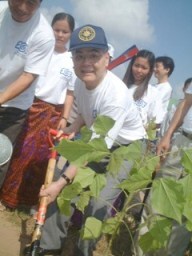
We transmitted to another country the Okinawan spirit, the wish for peace acquired through a long history.
From November 20 th , 2003 to November 24 th , 2003,the Okinawa Peace Prize Committee Chairman, Governor Inamine and around 150 Okinawan residents went to Cambodia and developed deeper relations with Cambodia through the planting ceremony of the Flowers of Peace Exchange Project.
Cambodian citizens have a history full of hardships such as going through a long civil war and experiencing political instability and nowadays, they are making brave efforts toward reconstruction and development. Based originally on the historical event that flowering trees sent after the war by Okinawan descendants living outside the prefecture encouraged Okinawans, we have sent, before the planting ceremony, 1,000 seedlings as an encouragement to Cambodian people and to create a sanctuary of peace for the body and spirit.
At the tree planting ceremony held on the morning of November 21, the Cambodian citizens, who are working at the reconstruction of their country, along with Okinawan people who sent the seedlings shared a common wish for peace.
(Photo:Planting trees and expecting beautiful flowers(Deigo, Ipe, Gold tree, Tokkurikiwata))
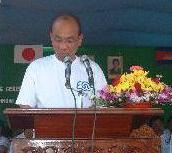
At the ceremony, Kep Chuk Tema, Governor of the Municipality of Phnom Penh, said in this speech “we want to nurse the plants we have received with care and the place where we planted them will be called the Phnom Penh-Okinawa Friendship Garden”.
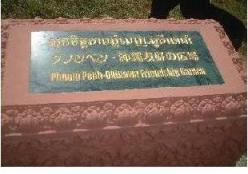
At the ceremony, a monument with the name of the place inscribed on it was unveiled and beside this monument, Governor Inamine and Governor Kep Chuk Tema planted a Deigo tree.
(Photo:The Governor of the Municipality of Phnom Penh, Kep Chuk Tema and the monument with inscriptions in 3languages:Cambodian language, Japanese and English)
Exhibitions of Cambodia Apsara dance and Ryukyu a Dance (Yotsutake) were presented, giving way to a cultural exchange.
At the end of the ceremony, all the participants planted the seedlings by the Tonle Sap riverside.
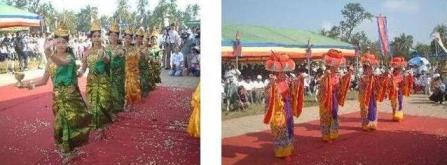
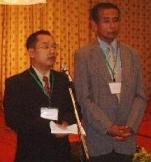
At the commemorative reception given in the evening, Governor Kep Chuk Tema and the Ambassador of Japan to Cambodia, Mr. Gotaro Ogawa, along with the participants coming from Okinawa prefecture and Phnom Penh residents could, in broken English and with the help of Cambodian participants studied in Japan, speak to each other, deepening bonds of friendship.
At the ceremony, celebrating the 30 yeas of Okinawa Gardening Contraction Association, tree-planting of the Municipality of Phnom Penh.
Activities for Uchinancyu and the future of our children
The Uchinanchu are very active in Cambodia. Pastor Ken Nielsen and his wife Katsuko (from Yomitan village) are in charge of 14 under privileged children, who live with them.
They focus particularly on education so that the children will be able to be independent in the future.
Welcomed by students who performed a Cambodian song, Governor Inamine said, “These children are very cheerful. I am sure they were brought up well”.
Katsuko said that their objective was raising the children so that they can contribute to the society. Mr. Nielsen said, “By spreading such grassroots activities, the people of Cambodia will be able to contribute to their country”.
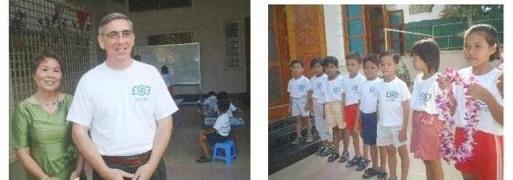
Mr. Nielsen and his wife, using their personal financial resources and funds from the United States,perform child-rearing activities with the help of local staffs.
NGOs from Okinawa also organize educational activities to support the future of Cambodian children.
The NGO Okinawa Asia Child Support (represented by Tetsuro Ikema), financed and built a school building “the Okinawa School” of the Sensokku Elementary School in Phnom Penh. Governor Inamine and the accompanying group visited this school and gave pencils and notebooks to the 3,000 children.
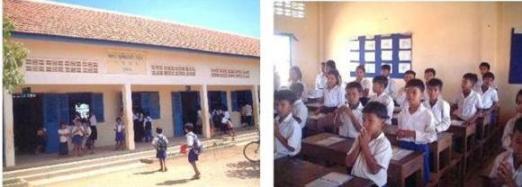
The Children and the Okinawa school
New exchange development
Preceding the tree-planting ceremony, the elementary school students donated a pedestal carved with the inscription “Phnom Penh-Okinawa Friendship Garden”. Also, they exchanged with elementary school students of Okinawa compositions and exchanged pictures.

Everyone at the Chruoy Changvar Elementary SchoolAlso, they exchanged with elementary school students of Okinawa compositions and exchanged pictures.
Exchange schools:
[Okinawa Prefecture]
- Sate Elementary and Junior High School (Kunigami village)
- Itoman Elementary School
[Municipality of Phnom Penh]
- Kubaru Chruoy Sakura Elementary School
- Chruoy Changvar Elementary School
-Voices of the participants of the Study Tour-
All the participants of the Study Tour, organized by the incorporated nonprofit organization Okinawa Peace Assistance Center, visited NGO facilities and learned about their activities of mine clearance and small weapon abolishment.
Shinichi Kawakami ;
I could realize that we were blessed to be raised in a peaceful environment while other countries that have experienced war not so long ago are obliged to put their children to work for everyday life. From this experience, I developed a fondness for countries that I did not know and I sincerely wish for their development. At the same time, I think we will be able to nurture friendship between countries of the world by sending more young people to have this on site experience.
Higa Yoko ;
We went to a rural village and we visited a family who receives aid for military discharge. It seems that NGOs and ODAs from Japan are efficiently functioning but there are still a huge amount of problems with the day―to―day life. However, all of these people show a beautiful smile and laugh from the bottom of their hearts. We can’t measure wealth only on an economical basis. I think it’s important to develop and promote the Cambodia of “beautiful smiles and nature”.
What kind of country is Cambodia?
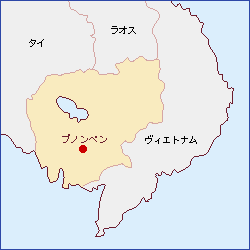
(From the Ministry of
Foreign Affairs Web Page)Area: 181,000 square kilometers
Population: 11,700,000 people
Capital: Phnom Penh
Religion: Buddhism (Theravada)
GDP per person: 253 U.S. Dollars
Average Life Expectancy: Men, 51.5 years old, Woman, 55.0 years old
Brief History: 12th Century, consolidation of country, construction of the Angkor Wat
1431-Invasion by the Ayutaya from Thailand
1863-Becomes a colony of France
1953-Entangled in the Vietnam War
1975-Beginning of the Pol Pot administration
1993-Becomes the Kingdom of Cambodia
During the Pol Pot Administration, many intellectuals, classic and folk dancers and successors of traditional arts were suppressed and killed.
The surviving leaders, with their everyday teaching, handed down with commitment and joy their knowledge of traditional arts to the younger generation.
The visiting group observed the Cambodia Royal University of Fine Arts and the Institute for Khmer Traditional Textiles. At the Tuol Sleng Museum, we learned that under the Pol Pot regime, people of all occupations were tortured and executed.
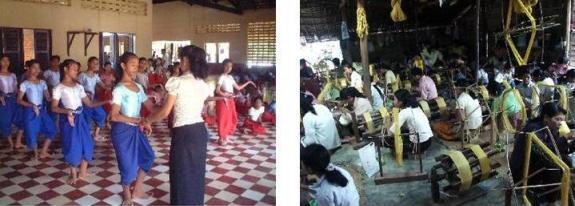
Early morning practice before class, at the At the Institute for Khmer Traditional Textiles, Cambodia Royal University of Fine Arts we noticed common features with the Okinawan textiles.
![]()
このページに関するお問い合わせ
沖縄県 知事公室 平和・地域外交推進課
〒900-8570 沖縄県那覇市泉崎1-2-2 行政棟1階(東側)
電話:098-894-2226 ファクス:098-869-7018
お問い合わせは専用フォームをご利用ください。
